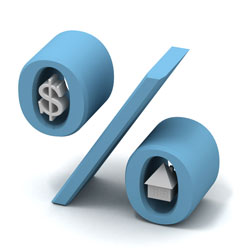First Mortgage as a Form of Senior Debt
The first mortgage is a loan that has priority over other claims or liens while other secured loans are considered subordinate. Other liens are called junior claims. The first mortgage has priority except for statutory liabilities such as taxes. Other than that, it has the same features as other loans backed by collateral and offered to finance the purchase of real estate.
Down Payment and Insurance
Financial institutions require insurance when the down payment is less than 20 percent of the amount borrowed. This means that the loan to value ratio is less than 80 percent, and the bank takes more risk. At the same time, collateral is used to secure the loan which makes it less risky for financial institutions. The mortgage has priority over other debt obligations in case the borrower defaults. The bank is paid first, i.e. before other creditors.
The Collateral and Lien
The collateral used to back the second loan can be the same as the asset pledged to secure the first one. The opposite of a first mortgage is an unsecured loan. In this case, collateral is not required, and banks rely on the creditworthiness of the borrower when making decisions. The interest rate on a first lien loan is lower.

Second lien debt is also risky for borrowers. When one asset is used to back two loans, then one’s home equity is at risk. In essence, a lien is a form of legal instrument that gives financial institutions the right to claim a property in case of foreclosure. The most common type of lien is the mortgage. While the borrower is the owner of the house, the financial institution has interest in the property. The same goes for boats, vehicles, machinery and equipment, and other major purchases. They can be repossessed in case of non-payment. Tertiary, secondary, and other lien holders are paid provided that any funds remain after foreclosure and liquidation.
In general, liens are placed on real and personal property such as commercial buildings, land and residencies, planes, vehicles, and others. They are valid only if the real or personal property is properly recorded. Recording takes place in the jurisdiction in which the asset is found. The first loan is thus referred to as a first position trust deed.
The first lien becomes important only if a second loan is taken against the same property. Then the financial institution holds the superior right. Most lenders account for the risk of default and offer a higher interest rate or require a secured bond.
Second Mortgages
This is a type of subordinated loan whereby the lien is registered second. Financial institutions look at different factors when offering a second loan. These include the applicant’s employment history and status, credit rating, and home equity. Banks usually favor applicants with a solid, long employment history and an excellent credit score. They also require that borrowers have a low debt-to-income ratio and significant equity. The term varies from one bank to another. It can be as long as 30 years which is the most common type of secured loan. However, some financial institutions require repayment in 1 year, and factors such as the structure of the loan play a role.
First Mortgage and Components
The main components are the principal and interest charges. The principal is actually the amount borrowed, minus subsequent payments made. Interest is calculated on the outstanding balance and not on the original loan. The balance is repaid through monthly payments. Interest charges are typically front-loaded. This means that borrowers pay less in interest toward the end or term. The mortgage life insurance and property tax are two other components. Property tax may be included in the borrower’s regular payments. The tax is based on the market value of the real estate, and a formal assessment is required to determine its value. The insurance is also part of the loan payment. The purpose is to protect the financial institution in case the borrower passes away or has a terminal illness. Some types of coverage also protect the policy holder in case he is unable to make payments.
Related Articles
Loan-to-Value as an Indicator of Default Risk
The loan-to-value ratio is a measure that correlates the loan amount to the value of a real estate property, vehicle, or another asset. It is used by financial institutions as an indicator of risk. Calculating LTVAs a rule, borrowers with a high loan-to-value ratio are considered high risk by...
Down Payment as a Way to Make Your Payments More Affordable
A down payment is required by banks when borrowers apply for a loan to finance the purchase of an expensive item, whether house or plant, vehicle, or machinery or equipment. It is usually a percentage of the price of the property, e.g. 5 – 20 percent. The amount put down is typically non refundable...
Second Mortgages for Home Improvement and Major Purchases
A second mortgage is a type of secured financing, which is considered subordinate. This means that there is another loan against the same real estate property. Payments are made only after the first mortgage has been paid off. Because financial institutions take more risk, they offer a higher...
Conventional Mortgage as a Low-Risk Financing Option
A conventional mortgage is a loan offered to borrowers who can make a down payment of at least 20 percent. Generally, such loans meet the criteria established by Fannie Mae and Freddie Mac. Advantages of Conventional Loans Borrowers benefit from a lower interest rate compared to other loans, and...
